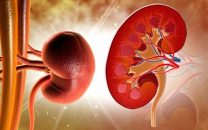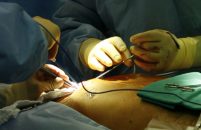Percutaneous coronary intervention (PCI) is considered the treatment of choice in ST-segment elevation myocardial infarction (STEMI). However, it is widely acknowledged that, in many cases, there are significant lesions in other coronary arteries. Previous randomized studies have shown that complete revascularization in a second procedure is more beneficial than intervention only in the culprit artery.…
What to Do in Cases of AMI with Multivessel Disease
The presence of lesions in multiple vessels is common in ST-segment elevation myocardial infarction (STEMI). It has been shown that, when they are treated in a second procedure, patients have a better outcome. To date, there is limited information available on percutaneous transluminal coronary angioplasty (PTCA) in vessels with severe non-culprit lesions during primary angioplasty.…
ACC 2023 | Complete Revascularization Strategies in patients with ACS and Multivessel Disease
In patients with acute coronary syndrome (ACS) and multivessel disease, complete revascularization is associated with better clinical outcomes. However, for non-culprit vessel revascularization the strategy remains unclear. The aim of this multicenter, open label, randomized, non-inferiority study, was to determine whether complete revascularization during index procedure is non inferior vs. staged. Primary end point was…
Should We Use Drug Coated Balloons in Patients with Multivessel Disease?
Recent studies have shown that a drug coated balloons (DCB) based approach resulted non inferior when compared against drug eluting stents (DES) only approach in patients with instent restenosis and de novo lesions in small vessel disease. So far, two international consensuses have reported the use of DCB is feasible and safe to treat native…
In Multivessel Disease, When Should Renal Impairment Be Considered?
Cardiovascular disease is one of the main causes of morbidity and mortality in patients with advanced chronic kidney disease (CKD), and vice-versa. Both diseases share risk factors, including, but not limited to, diabetes, high blood pressure, smoking, dyslipidemia, and old age. As kidney disease develops, its severity grade has been linked to more thrombotic events…
Introducing the number one enemy of PCI: diabetes
About 25% of patients with multivessel disease undergoing myocardial revascularization surgery or PCI have diabetes. In this subgroup, the benefit of surgery in terms of mortality has long been shown: in the BARI study (Bypass Angioplasty Revascularization Investigation) patients undergoing PCI had close to double the mortality rate at 5 years compared to those…
Myocardial Revascularization Surgery: One or Two Internal-Thoracic-Artery Grafts?
The use of both internal thoracic (mammary) arteries for myocardial revascularization surgery might improve long-term outcomes, compared with the use of a single internal thoracic artery. Patients scheduled for myocardial revascularization surgery (only multivessel procedures; combined valve procedures were excluded) were randomized to receive a single internal-thoracic-artery graft (internal thoracic artery for the anterior…






